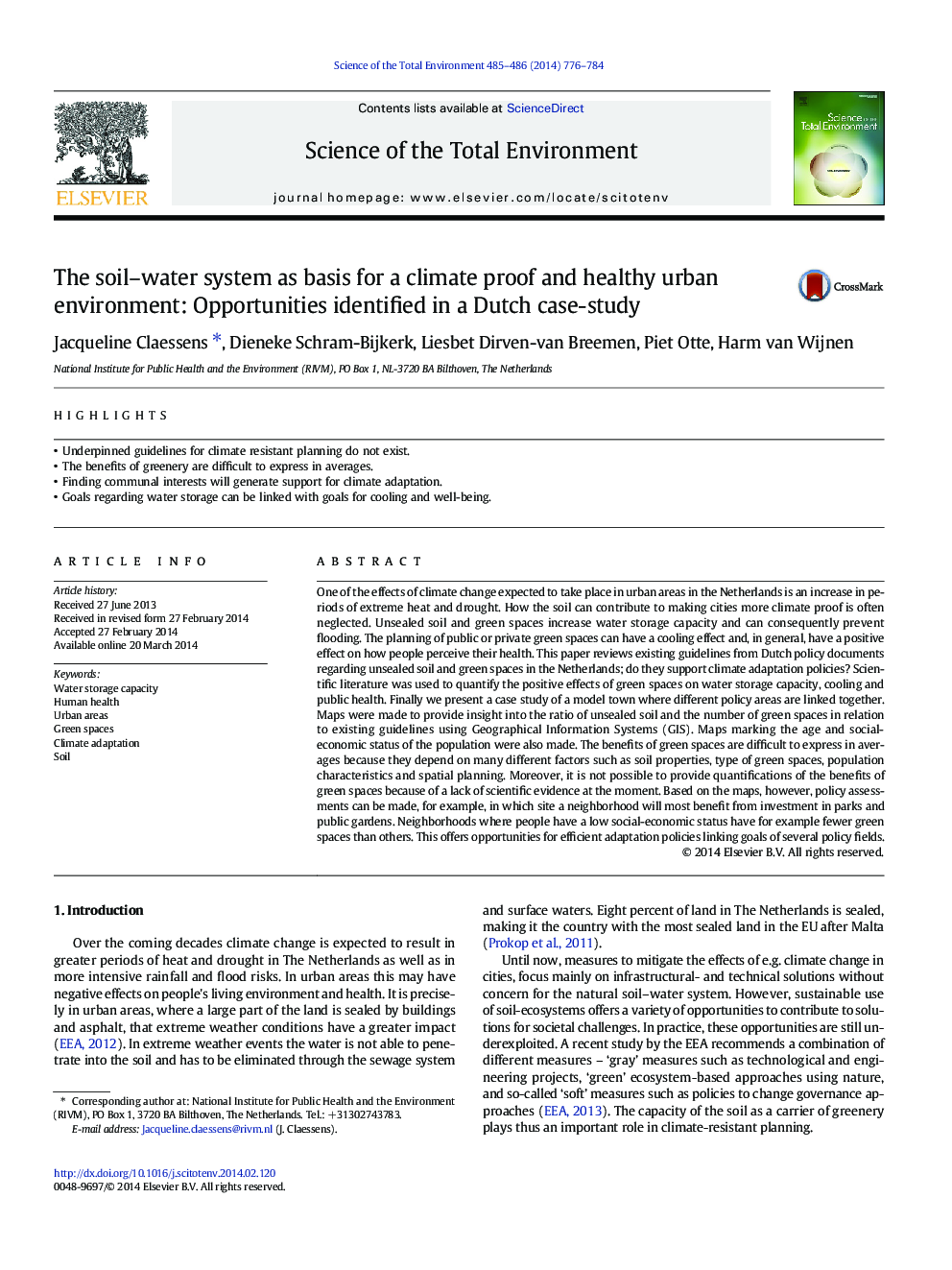| Article ID | Journal | Published Year | Pages | File Type |
|---|---|---|---|---|
| 6330567 | Science of The Total Environment | 2014 | 9 Pages |
Abstract
One of the effects of climate change expected to take place in urban areas in the Netherlands is an increase in periods of extreme heat and drought. How the soil can contribute to making cities more climate proof is often neglected. Unsealed soil and green spaces increase water storage capacity and can consequently prevent flooding. The planning of public or private green spaces can have a cooling effect and, in general, have a positive effect on how people perceive their health. This paper reviews existing guidelines from Dutch policy documents regarding unsealed soil and green spaces in the Netherlands; do they support climate adaptation policies? Scientific literature was used to quantify the positive effects of green spaces on water storage capacity, cooling and public health. Finally we present a case study of a model town where different policy areas are linked together. Maps were made to provide insight into the ratio of unsealed soil and the number of green spaces in relation to existing guidelines using Geographical Information Systems (GIS). Maps marking the age and social-economic status of the population were also made. The benefits of green spaces are difficult to express in averages because they depend on many different factors such as soil properties, type of green spaces, population characteristics and spatial planning. Moreover, it is not possible to provide quantifications of the benefits of green spaces because of a lack of scientific evidence at the moment. Based on the maps, however, policy assessments can be made, for example, in which site a neighborhood will most benefit from investment in parks and public gardens. Neighborhoods where people have a low social-economic status have for example fewer green spaces than others. This offers opportunities for efficient adaptation policies linking goals of several policy fields.
Related Topics
Life Sciences
Environmental Science
Environmental Chemistry
Authors
Jacqueline Claessens, Dieneke Schram-Bijkerk, Liesbet Dirven-van Breemen, Piet Otte, Harm van Wijnen,
